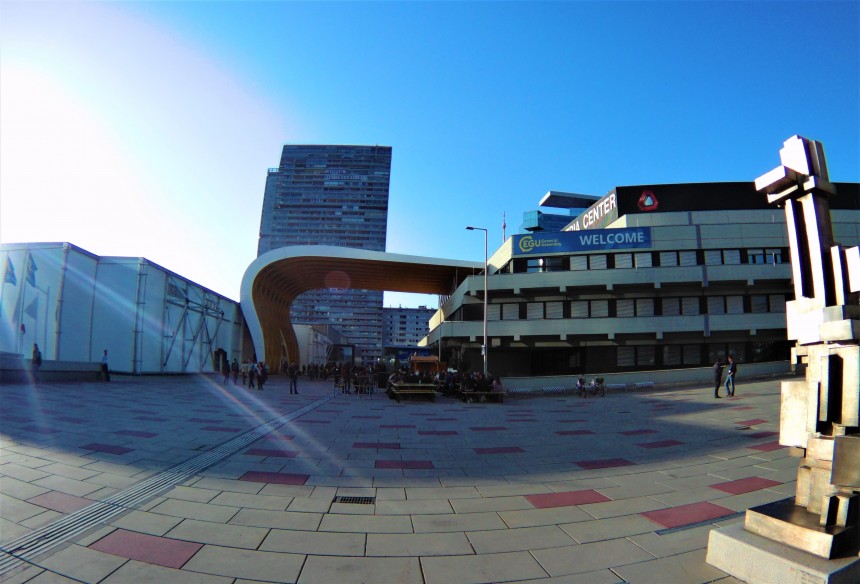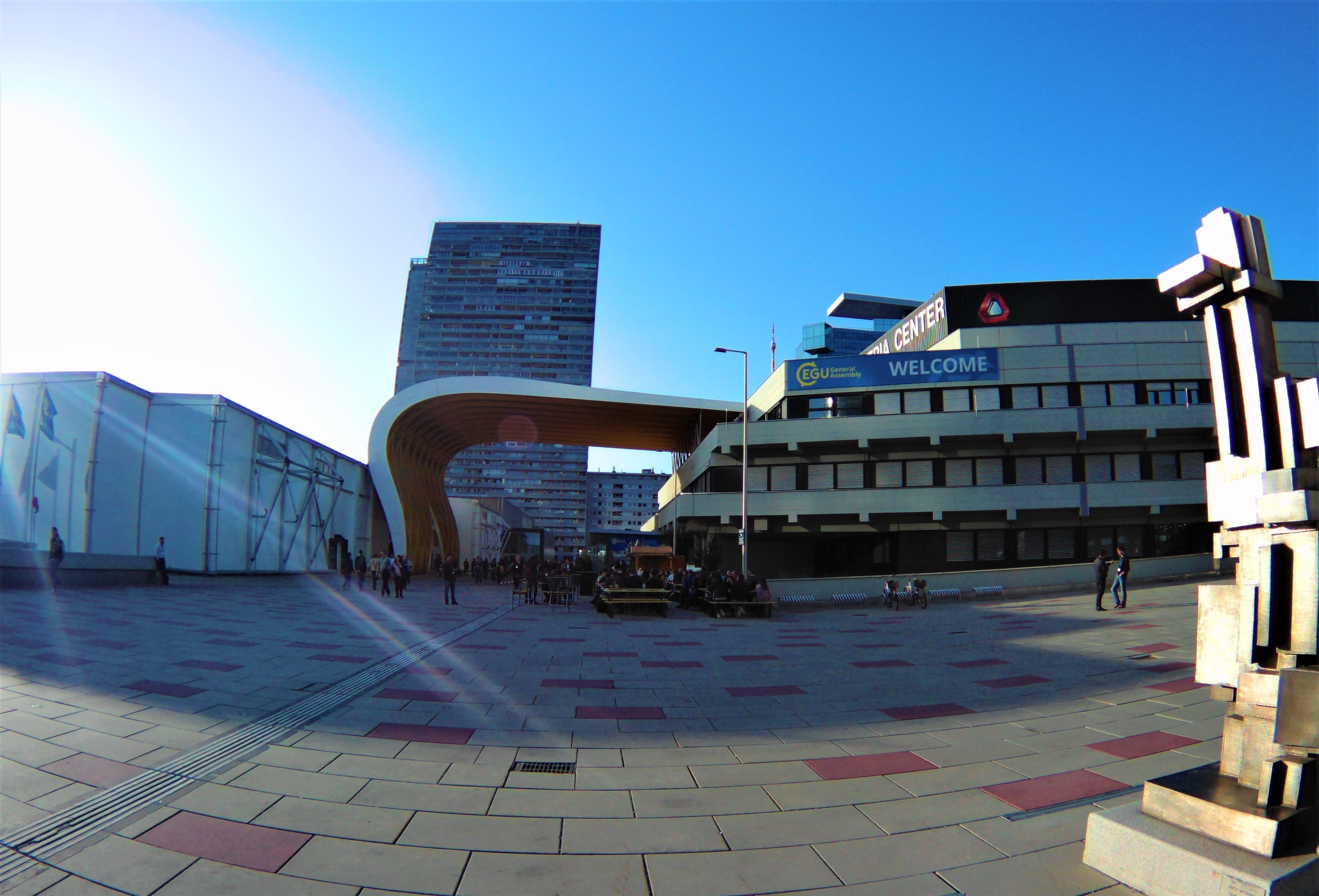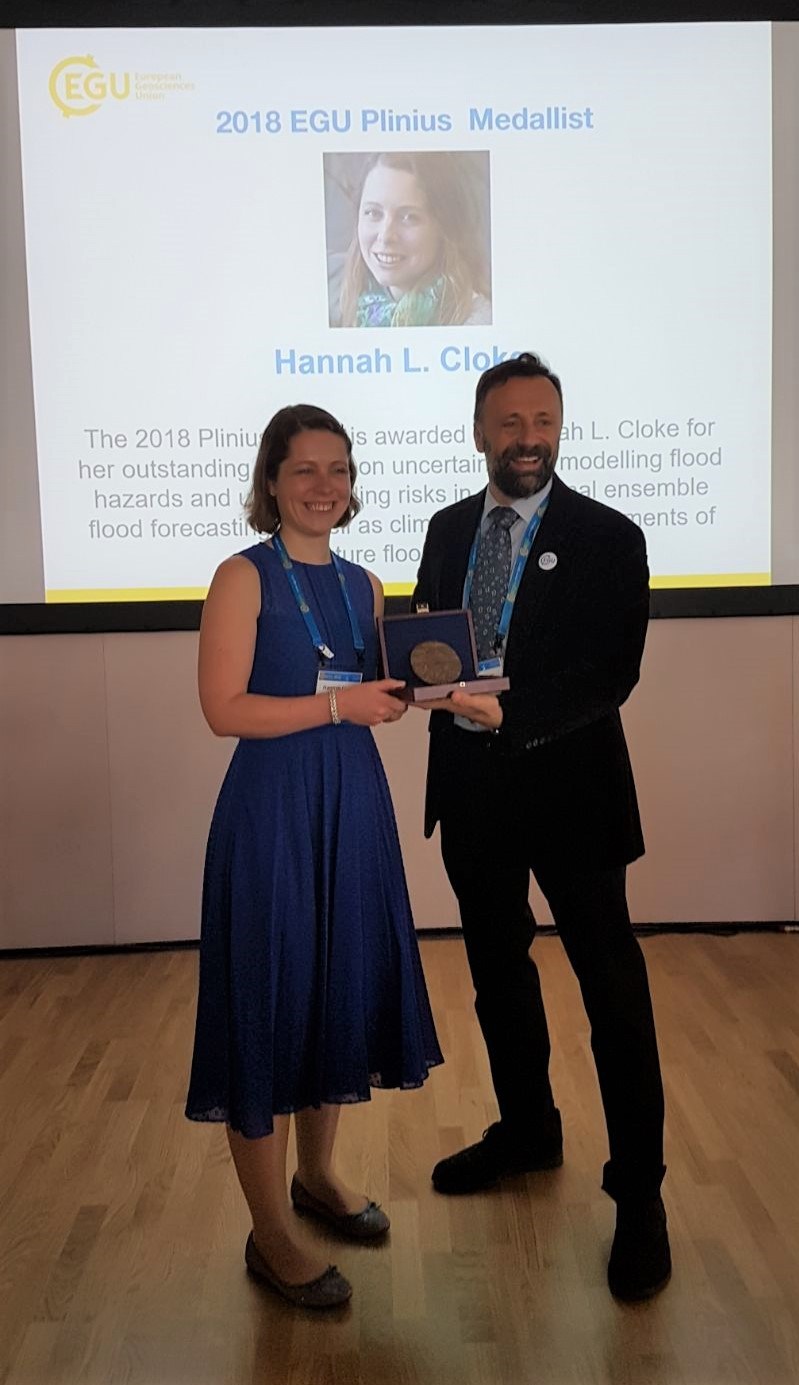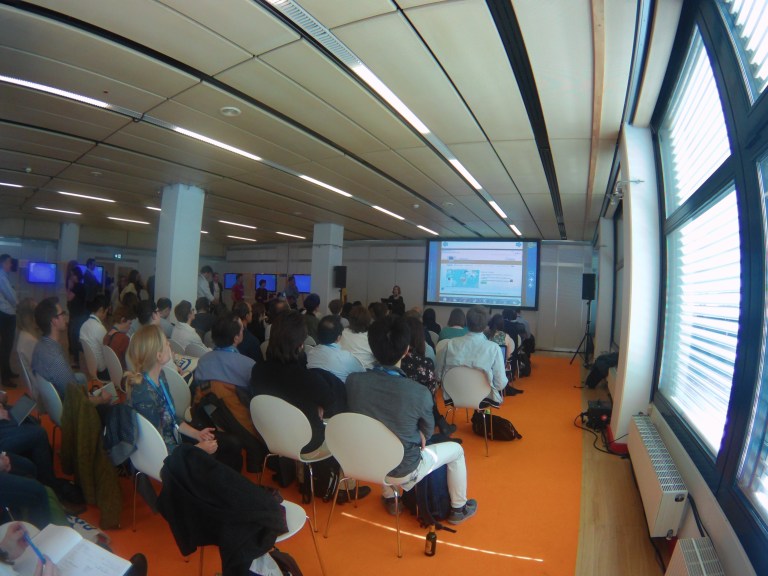HEPEX Highlights from EGU 2018

Last week, 15,075 scientists from 106 countries attended the European Geosciences Union (EGU) General Assembly in Vienna. The week was jam-packed with more than 17,000 talks, posters and PICO presentations in 666 different sessions. The HEPEX community was represented across 5 oral/poster sessions and 1 PICO session, plus many other related sessions and events! Attendees could attend talks covering a huge range of research, from very local-scale all the way up to global scale studies, from flash flood forecasting to seasonal hydrological predictions, and on the history of hydrology and science communication. The week was a great showcase of the excellent work around the world related to ensemble hydrological forecasting.
The Austria Centre, Vienna
This year, we wanted to hear from the HEPEX community about their experience of #EGU18, so we sent out a “call for highlights”.
These were your highlights from the week in Vienna:
The Games for Geosciences session was a great success, including the EGU Games Night, with many of the HEPEX community alongside conference attendees from various fields of research enjoying the chance to play hydroscience games by Louise Arnal, Louise Crochemore, Maria-Helena Ramos and Massimiliano Zappa, plus several other brilliant Geosciences games. There was even a software designer from Google Earth who enjoyed the water management game and even managed to finish it without being fired! Through the oral and poster presentations in this session, we also learnt how to design and build games, and the importance of debriefing after playing a game in order to better assess the learning objectives behind the implementation of a game. The session left the community encouraged to continue producing games on hydrological forecasting and ensemble predictions! You can find some of the HEPEX games here to try them out for yourself!
Three pillars of success for the HEPEX community were highlighted in a presentation by Maria-Helena Ramos on the History of Hepex: 1) friendly people who are full of energy, from operational, research and agency settings; 2) a favourable scientific and operational context, with medium-range meteorological ensemble prediction systems (EPS) becoming operational in the early 1990s and long-range ensemble streamflow predictions (ESP) being used in hydrology for water supply and hydropower prediction since the early 1980s; 3) a specific, achievable and actionable goal, expressed through the HEPEX mission, which has always supported an integrative view of the hydrological forecasting system, with the community acting as a facilitator to exhange ideas, data, methods and experiences. You can see the presentation here.
@hepexorg evolved from a scientific experiment to a family, and is successful simply because the goals have been specific, achievable and actionable. Thanks to Maria-Helena Ramos for the HEPEX historical review!! #hepex#Forecasting#hydrologicalforecastingpic.twitter.com/qGULtJy4My
— Ilias Pechlivanidis (@IPechlivanidis) April 12, 2018
This year we also had two inspiring hydrology-related medal lectures to attend. Hannah Cloke was awarded the Plinius Medal for her research on uncertainties in modelling flood hazards and understanding risks in operational ensemble flood forecasting, as well as climate impact assessments of future flood risks. Her lecture, “towards forecasts and early warnings of natural hazards everywhere” gave an overview of cutting edge research in forecasting natural hazards from fires to floods across the globe, and inspired us to “be brave” in our scientific endeavours and continue to tackle challenges in forecasting natural hazards and communicating complex and uncertain forecasts.
Hannah Cloke receiving the Plinius Medal at EGU
The Henry Darcy Medal was awarded to Alberto Montanari for his physically based stochastic modelling and the impact this has had on water-resources engineering and management. His lecture was entitled “hydrology is important” and outlined 10 propositions for promoting water science, from objective and transparent uncertainty estimation to taking a clear position within the debate on global change and sustainability. You can download the presentation here.
Another highlight of EGU this year was the PICO session on Operational forecasting and warning systems. PICO sessions see presenters give a 2-minute introductory talk, followed by discussions at large interactive touch-screens displaying the speakers’ work. This session showcased a range of research on the application of ensemble forecasts, and noted highlights were Gabriela Guimarães Nobre’s presentation on “forecasting and coping with maize yield anomalies thorugh cash transfers in Kenya” and Madhab Uprety’s work on “moving towards forecast based flood preparedness in Nepal: linking science of predictions to preparedness actions“.
The operational forecasting and systems for natural hazards: challenges and innovation PICO session.
As always, the conference saw several social events, with the annual HEPEX-IMPREX meal and of course the infamous conveners party to close the conference, at which we were treated to a science poem by Jess Neumann and Louise Arnal, who were dressed as unicorns – the Water@Reading sign of solidarity (unicorns were made to inspire…). Massimiliano Zappa also found a great way to add some extra fun into networking throughout the week, with his EGU Bingo, through which he met 16 scientists he’d previously only met via Twitter.
I owe you the final stand of my #egu18#bingo. I met 16 of the 25 followers I never met before on my list. All fantastic people also in real life!
I met also some not on the list and new ones.
Great!https://t.co/tQ373OE0i1pic.twitter.com/5rGw2zlyIf— Massimiliano Zappa (@Hydrology_WSL) April 13, 2018
With better communication with the wider scientific community, practitioners and decision-makers identified as a key focus for the future of HEPEX, we also saw a host of new science communication sessions and events throughout EGU this year, including the aforementioned poetry slam. The conference had a resident poet, Sam Illingworth, and cartoonist, Matthew Partride, who documented the week through art, and ran several sessions on communication in the geosciences. The conference also saw the launch of the new Geoscience Communication journal, and many of the HEPEX community left the conference feeling inspired to not only continue researching the challenges of hydrological ensemble forecasting, but also to find novel ways to communicate their science to a wider audience. Speaking of which – if you would like to write a HEPEX blog post on your work or other related topic, please consider submitting one to blog@hepex.org – you can find out more about writing a post here.
Thanks to all those who sent in their highlights from #EGU18 – if you have any more you’d like to include, we’d love to hear about them in the comments below!
Original article published in HEPEX, April 18, 2018 (link)



